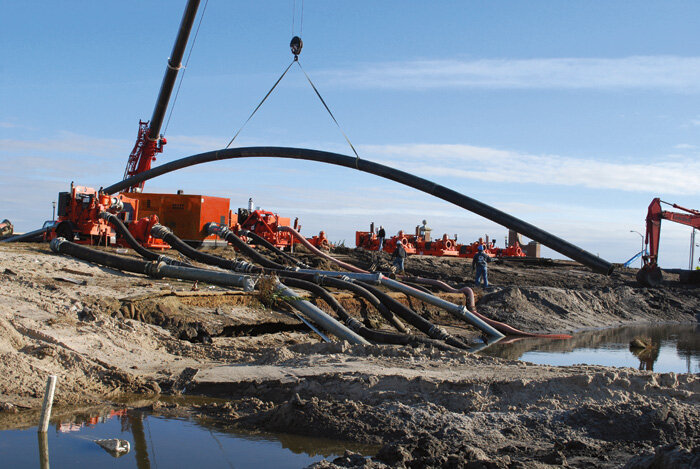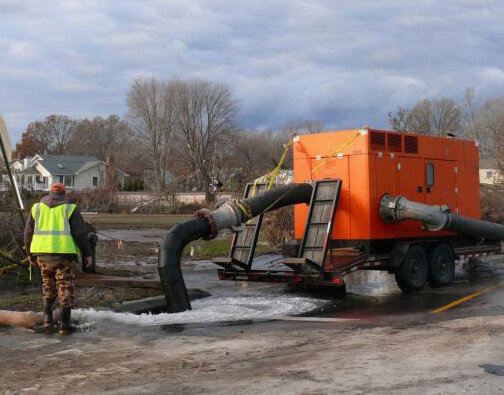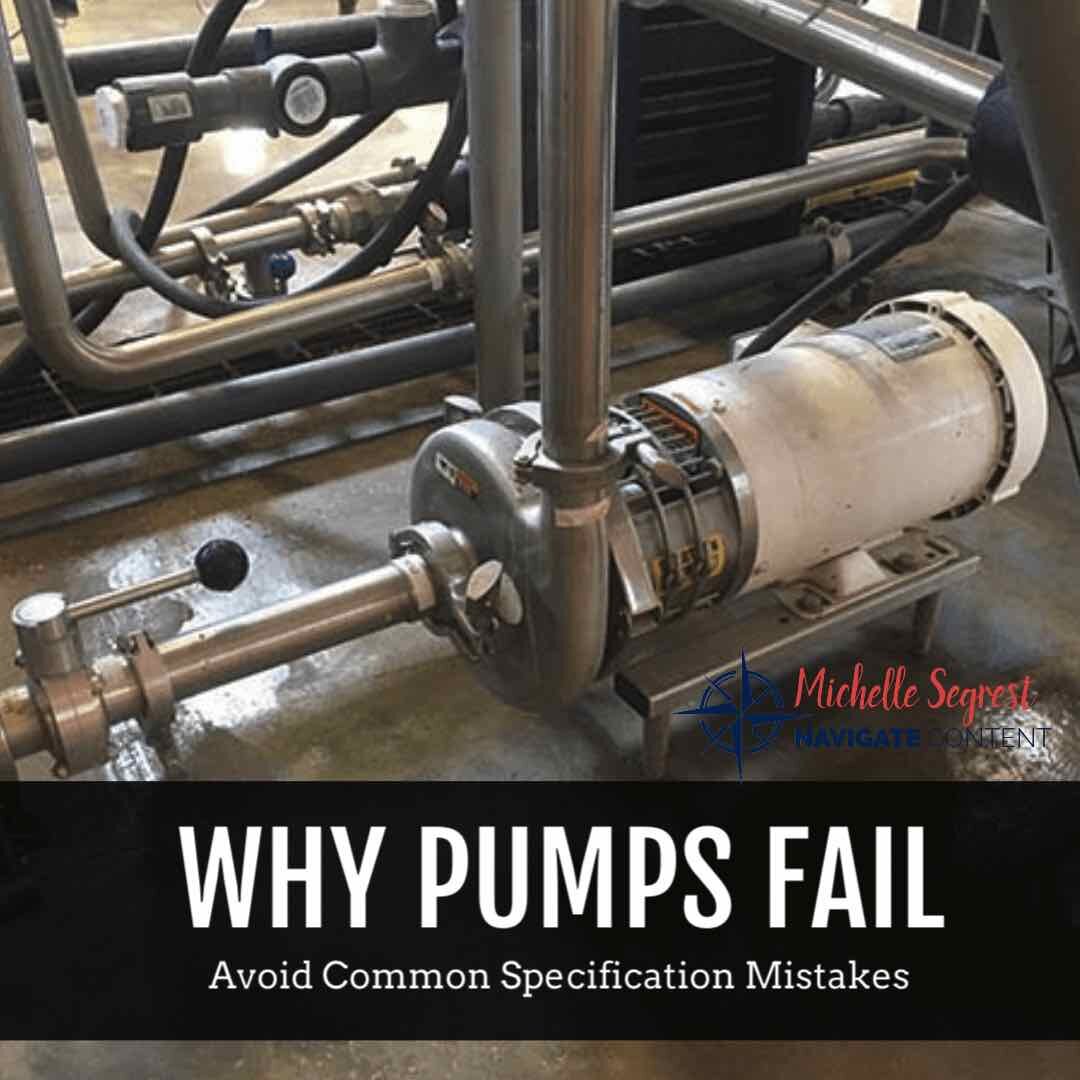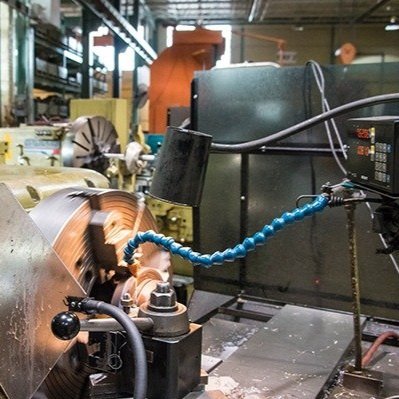Superstorm Sandy Disaster Response - How Pump Companies Helped the U.S. Northeast Recover
/Hurricane Sandy, later upgraded to Superstorm Sandy, was the deadliest, most destructive and strongest storm of the 2012 Atlantic Hurricane Season. Several pump companies deployed equipment to the flooded areas immediately after the storm made landfall near Atlantic City, N.J., on Oct. 29, 2012 to help the area recover from the destruction.
By Michelle Segrest, Navigate Content, Inc. - Reporting on the Industry
More than two weeks after Hurricane Sandy ripped through the U.S. Northeast and claimed the lives of more than 120 people, pumps continued to work at maximum capacity to help clean up and restore the devastated areas.
Hurricane Sandy, later upgraded to Superstorm Sandy, was the deadliest, most destructive and strongest storm of the 2012 Atlantic Hurricane Season. It caused an estimated $70 billion in property damage and economic losses. Until Hurricanes Harvey and Maria swept through in 2017, it was the second most expensive hurricane in U.S. history.
Causing the most damage was a ruthless, wind-driven wall of water that swept in at high tide and engulfed low-lying areas of New York and New Jersey.
Pump Companies Deploy Equipment for Hurricane Sandy Recovery
Several pump companies deployed equipment to the flooded areas immediately after the storm made landfall near Atlantic City, N.J., on Oct. 29, 2012. Some pumps were deployed earlier, in anticipation of Sandy’s arrival.
The day after the storm hit, Mersino and its manufacturing sister company, Global Pump, had dozens of skilled, OSHA-trained pump operators on the ground and had mobilized hundreds of pumps and generators to provide immediate relief.
Mersino did not rent any pumps. Instead, it supplied power and dewatering services to municipalities, emergency response contractors, individual private businesses, and restoration contractors.
“Our crews visited the affected areas, assessed the extent of the problem and then developed a plan for the best approach to solving the problem,” explained Gino Mersino, the company’s president, who worked onsite with the recovery efforts. “The proper pump was selected for each application. With onsite project management, Mersino crews installed, operated, and maintained every pumping system deployed.”





Equipment Used for Superstorm Sandy Recovery
Much of the water that was left behind after the surge was impacted by hydrocarbons, Mersino said. Large basements and parking garages held millions of gallons of water that was mixed with diesel fuel and oil. Mersino installed and supplied complete pumping systems to pump the polluted water into oil/water separators, which skimmed and removed the oil.
The remaining contaminated water was pumped through carbon vessel tanks, then the product-free water was discharged into existing sewers to ensure legal and environmentally-safe disposal.
Diesel pumps ranging from 4 to 18 inches in discharge diameter were installed and operated by Mersino. These trash pumps move large volumes of water rapidly and pump the solids that are often suspended in flood waters after storm events. The smaller diesels are useful for smaller pockets of trapped water and are easily deployed and operated—installed in minutes during emergency events. The larger pumps take longer to install but are capable of moving water in volumes up to 12,000 gallons per minute.
Mersino also deployed more than 100 high-volume submersible dewatering pumps that were used in basements containing trapped flood waters in lower areas deeper than 40 to 50 feet below street level. “Mersino pump operators carried multiple 4-inch, high-volume submersibles down many flights of stairs, wading through water, and located the sump areas to place the dewatering pumps,” Mersino explained.
Grant Salstrom has also been directly involved in deploying and organizing pumps to help communities recover from the destruction. “This is the worst storm I’ve experienced first-hand on the East Coast in the last 25 years of my career,” the managing director of Xylem Dewatering Solutions said. “In the first few weeks since Sandy hit, we had 500 pumps on rent at any given time from South Carolina up the East Coast. We were concentrating on solving our customers’ dewatering needs in the northern New Jersey and New York areas, which were the hardest hit areas from the storm.”
Xylem had 200 pumps in place in the storm’s impact zone just one day after landfall. “Municipalities, wastewater treatment plants and local customers were devastated from the immense flooding, and we are working to ensure they are able to get back online as soon as possible,” Salstrom said. “Our East Brunswick, N.J., location worked off standby generator power for almost two weeks. Many of our employees also endured personal hardship resulting from Sandy, yet they continued to service their customers and everyone that called for our help.”
Supplying Pumps for Dewatering for Homeowners and Small Businesses
Xylem moved quickly to ensure that homeowners and small businesses had the pumps they needed. Pump distributors throughout the Northeast were supplied with excess inventory of Bell & Gossett- and Goulds Water Technology-branded sump pumps to use—once power was restored—to remove flood waters from basements and other low-lying structures.
Gorman-Rupp distributors and affiliated rental outlets responded by moving out entire fleets of equipment and putting them into service in highway and subway tunnels. When additional pumps were required to support efforts to clear out the seven subway tunnels routed under the East River, the company responded by shipping another 40 units within a day of receiving the call. Another 20 utility pumps were soon sent from the factory to dewater areas of the city’s inundated underground steam distribution system.
Gorman-Rupp pumps were also assisting in areas beyond the infrastructure under the city. During the worst of the storm, many of the area’s 14 wastewater plants filled beyond capacity or flooded, allowing a mixture of sewage and storm water to bypass treatment facilities, flow into city waterways and flood into streets, and ultimately, into the buildings. While Gorman-Rupp pumps were placed into service at many of the affected plants, other units were deployed at 34th Street, Water Street, and buildings such as the Bellevue Hospital Center, which took on water and lost primary power during the storm.
Gorman-Rupp pumps were hard at work across Lower Manhattan, in the financial district of Jersey City, and at power plants in Long Island City and Manhattan.
“Responding quickly with the right equipment is an important part of what we do,” said Tom Seymour, Gorman-Rupp’s vice-president of sales and marketing. “We continued to support efforts on the ground by getting equipment in the hands of the recovery teams as soon as the need arises.”
Pumps Used for Hurricane Disaster Relief
Thompson Pump is a 40-year veteran in disaster relief, facilitating cleanup efforts with the Exxon Valdez oil spill, the World Trade Center collapse, several flooded areas in the Midwest and hurricane-damaged areas in the Southeast. Thompson pumps were dispatched in communities, wastewater facilities, hospitals, golf courses and aggregates in New York, New Jersey, Maine and Rhode Island.
“Our Emergency Response Team knows they are on call 24/7 until a crisis is under control,” said Bill Thompson, president of Thompson Pump. “We evaluate all avenues where we can assist in disaster relief efforts, and we are committed to utilizing our equipment and experience to help anyone in need.”
Pioneer Pump Company deployed a truckload of diesel pump packages and made them available to FEMA, as needed. National Pump & Compressor set up more than 50 of Pioneer’s pumps around New York to help dewater the subways and other affected areas. Pioneer also sent a dozen of its best pump operators to help with the restoration.
Sunbelt deployed a fleet, just as it did in Mississippi after Hurricane Isaac hit two months earlier.
Getting pumps onsite quickly was vital to re-establishing power for many regions, said Paul Schlumpberger, vice president of Pioneer Pump. “During the storm, the electric company turned off power to reduce damage and increase safety. In areas where power lines are underground and underwater, even functional lines could not be turned on until the water is pumped out. We expect to be onsite for sewage bypass projects to repair sewer systems that were overwhelmed by the extraordinary volume of water that hit them. Our products will be at work on temporary dike system repairs, lift station repairs and dewatering construction sites.”
WeGotPumps.com sells pumps from manufacturers including AMT Pumps, Gusher, All-Flo, Goulds, Fulflo, IPT and more. “We are supplying pumps for several of the disaster relief groups leading the initial response, as well as homeowners and businesses faced with overwhelming water levels,” said Chris Anderson, president of WeGotPumps.com.
Cornell Pump Company’s dewatering pumps have been in action in New York in the past, removing water from the subway under the collapsed twin towers following the Sept. 11, 2001 attack. The company shipped 200 pumps to the New Orleans area after Hurricane Katrina. It shipped some east ahead of Hurricane Sandy.
“What we saw this year was a lot of people moving product there well ahead of the storm anticipating the flooding,” Cornell’s vice president Marcus Davi said.
No one can reverse the damage that was created by Hurricane Sandy, Salstrom explained. “But we will continue to dedicate ourselves to assisting our customers and ensuring that their needs are met so they can become operational as soon as possible.”
Recovery efforts from Sandy continued in the densely populated northeastern region. At its peak, the storm knocked out power to 8.5 million people in 10 states.
Mersino crews continued to work up and down the East Coast, with a large presence in Manhattan. “Our crews are true road warriors, and they enjoy the challenge of providing relief services during crises such as this,” Mersino said. “The chaos that initially followed the event is waning, but there is still much work to do. Mersino crews will remain in the area until all of the work is completed.”
(Originally published in Pumps & Systems, 2012. Updated April 2020)
If you like this article about pumps used in Superstorm Sandy Recovery, please PIN IT!
This page contains affiliate links. If you click on the product links and make a purchase, it allows me to make a small commission at no extra cost to you! Thank you for your support! I hope you find value in this content!











